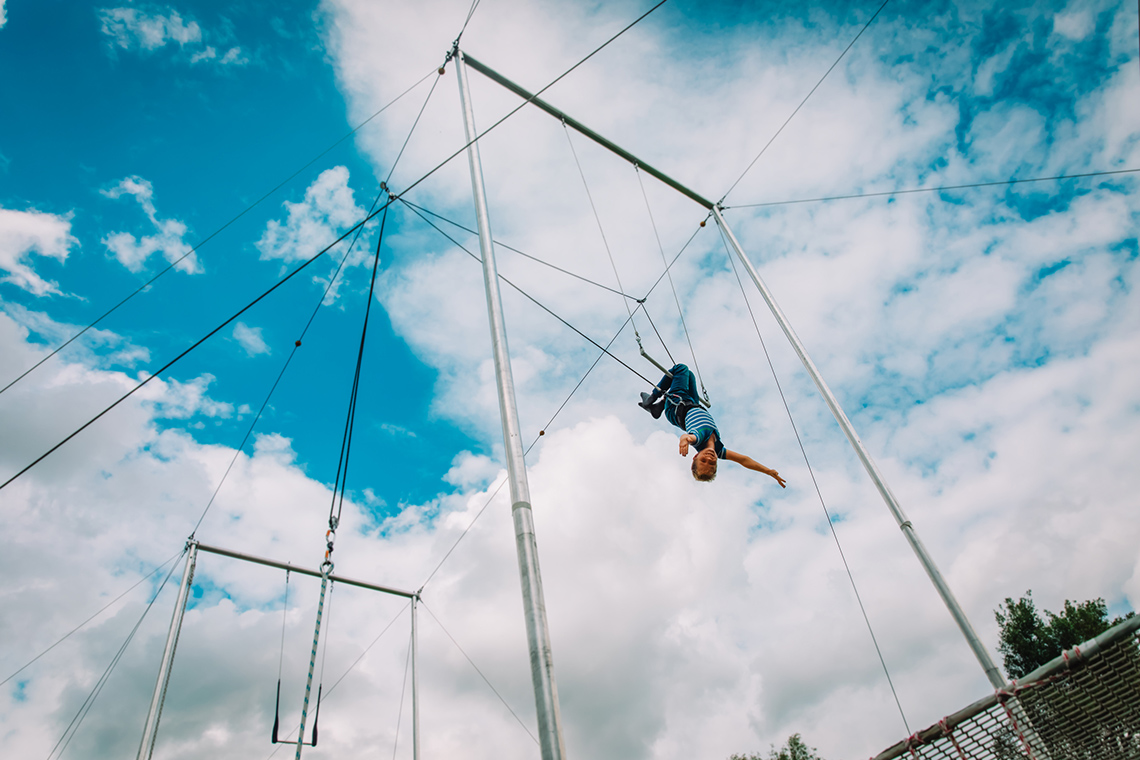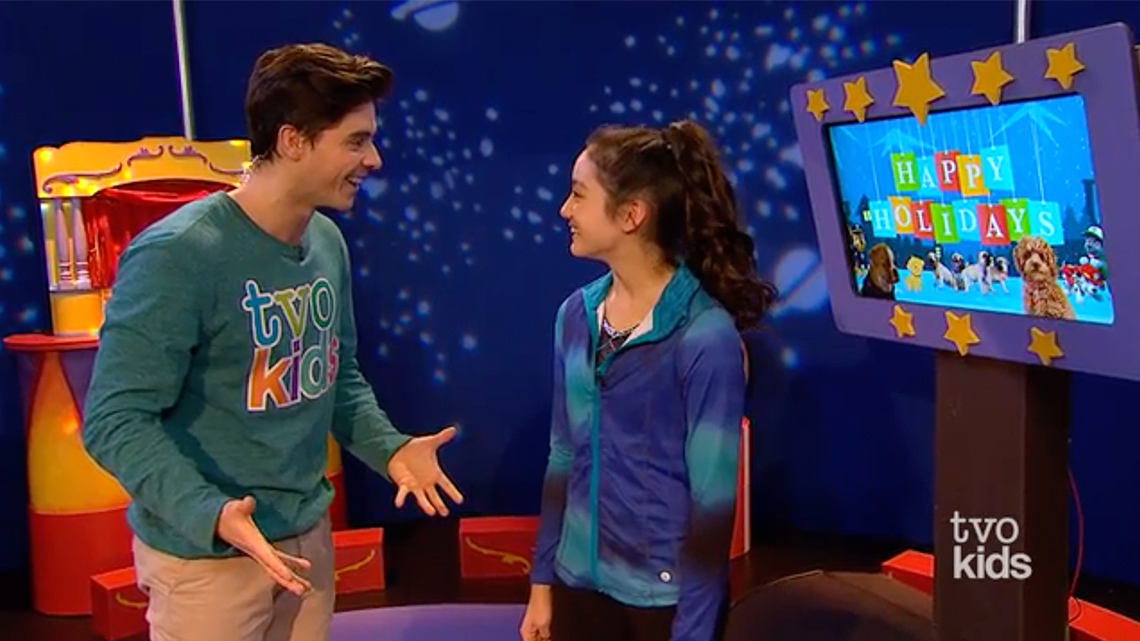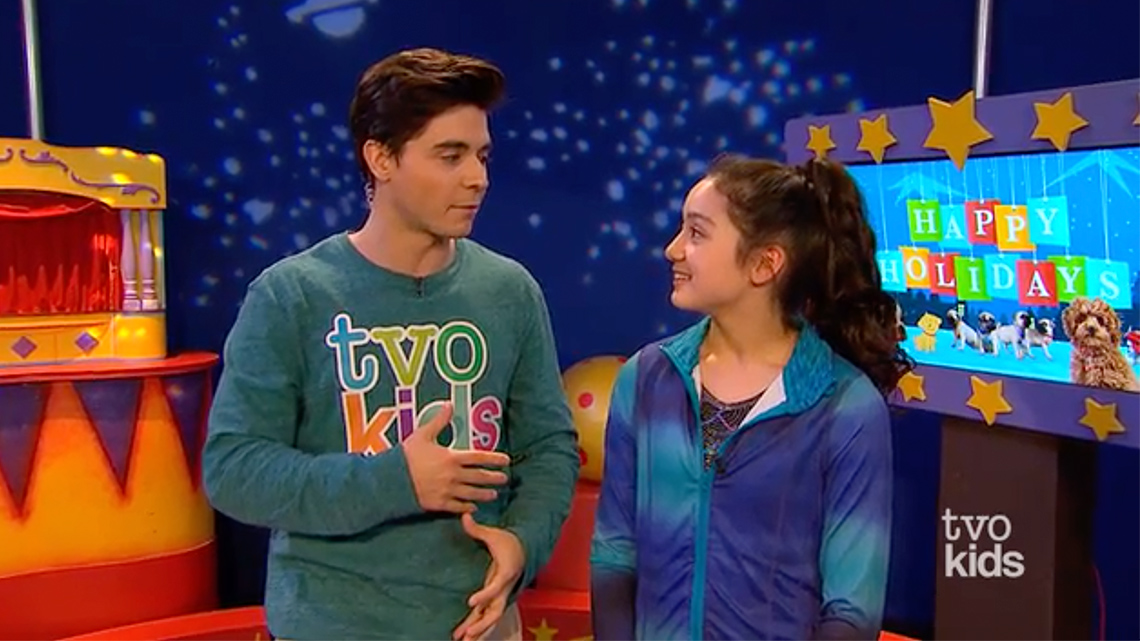Minds On
Paying attention
Let’s explore a video in which Lucas interviews Celeste, a member of the Big Top Academy.
Access the video entitled “Big Top Academy In The Space! – Lucas Interviews Celeste” to learn more about Celeste.
Student Success
Think-Pair-Share
How did Lucas show Celeste that he was paying attention and interested in her thoughts and ideas?
Discuss with a partner, if possible.
Note to teachers: See your teacher guide for collaboration tools, ideas and suggestions.

Action
Being attentive
What does being attentive mean? How can we show that we are being attentive? Discuss with a partner, if possible.
Press ‘Being Attentive’ to reveal a description of how to be attentive and why it is important:
We can be attentive by showing the person who is presenting that we are focused on them and their ideas.
Being attentive helps us to understand the presenter’s message. It can also make the presenter feel respected and appreciated by the audience.
Attentiveness strategies
A few strategies that we can use to show our attentiveness might be:
- focusing on the presenter
- waiting for your turn to share
- asking questions to clarify ideas or get more details
Interviews
Interviews are a type of conversation where one person asks questions while a second person provides answers.
Interviewing another person is a great way to practice our attentiveness strategies.
Let’s explore the Minds On video again. Think about the following questions:
- Which attentiveness strategies do Lucas and Celeste use during their interview?
- If you could ask Celeste a question, what would it be?
Record your ideas using a method of your choice.
Press ‘See more’ to reveal the attentiveness strategies
Attentiveness Strategies:

Focusing on the presenter.
Celeste shows Lucas attentiveness by turning towards Lucas and facing him during the interview.

Waiting for your turn to share.
Celeste waits for Lucas to finish speaking before she shares her response.

Both Lucas and Celeste could ask each other questions to get more details from each other.
In this situation, Lucas was interviewing so he created questions before the interview. During the interview, if he needed more details, he could ask more questions.
Consolidation
Create your own interview

Interviews are a type of conversation where one person asks questions while a second person provides answers. Interviewing another person is a great way to practice our attentiveness strategies.
It’s time to create your own interview plan!
Create an interview plan by following these steps:
|
Step 1 |
Think of a person you would like to interview. This person is your interviewee. |
|
Step 2 |
Record three questions that you would like to ask your interviewee. |
|
Step 3 |
Review the attentiveness strategies and choose three that you would like use during your interview. |
Complete the Interview Plan Template in your notebook or using the following fillable and printable document. You can also use a voice recorder, speech-to-text, or writing tool.
|
Interview Plan |
|
|
1) Record the name of your interviewee. |
|
|
Interviewee |
|
|
2) Record three questions that you would like to ask your interviewee. |
|
|
Question 1 |
|
|
Question 2 |
|
|
Question 3 |
|
|
3) Record three attentiveness strategies to use during your interview. |
|
|
Strategy 1 |
|
|
Strategy 2 |
|
|
Strategy 3 |
|
|
4) When you conduct your interview, record your interviewee’s answers. |
|
|
Answer 1 |
|
|
Answer 2 |
|
|
Answer 3 |
|
Press the ‘Activity’ button to access the Interview Plan Template.
Extension activity: conducting interviews
If possible, conduct your interview!
Conduct your interview by using your Interview Plan Template and record your interview using a method of your choice.
When you are finished with your interview, respond to the following questions:
- What attentiveness strategies worked well?
- What did I learn from my interviewee?
Record your responses using a method of your choice.
Reflection
How do you feel about what you have learned in this activity? Which of the next four sentences best matches how you are feeling about your learning? Press the button that is beside this sentence.
I feel…
Now, record your ideas about your feelings using a voice recorder, speech-to-text, or writing tool.